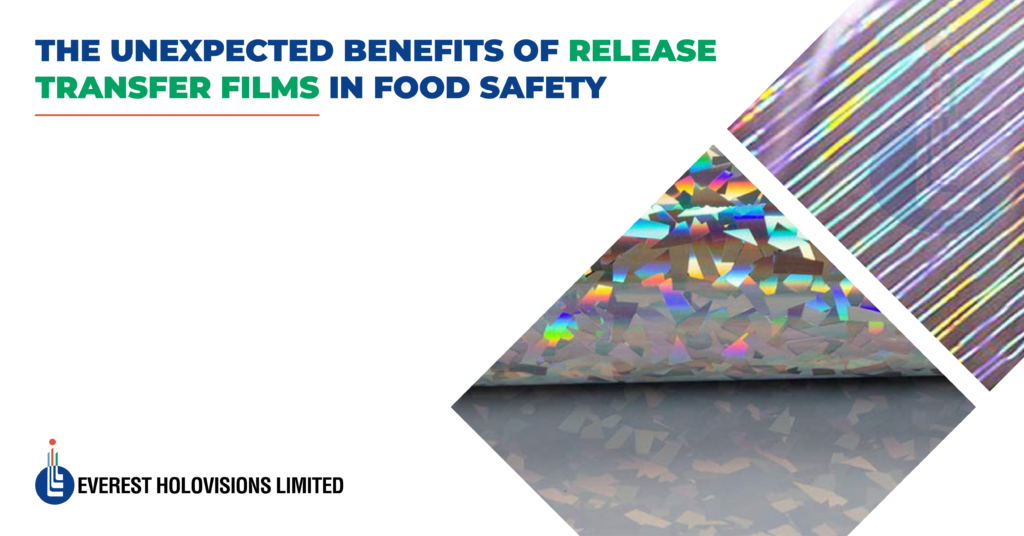In food safety, innovation is key to ensuring that products remain safe and uncontaminated throughout their journey from farm to table. While Release transfer films in Jaipur are typically associated with the print and packaging industry, their application in food safety is an unexpected yet significant advancement. These specialized films offer numerous benefits that enhance the safety and quality of food products. In this blog, we explore the surprising advantages of using release transfer films in food safety and how they are revolutionizing the industry.
Understanding Release Transfer Films
Release transfer films in Jaipur are multilayer materials designed to transfer printed designs or coatings onto various surfaces efficiently. These films typically consist of a carrier film, a release agent, and an adhesive layer. When applied with heat and pressure, the desired coating or design adheres to the target surface, ensuring a precise and clean transfer. In the context of food safety, release transfer films are used for various applications, from packaging enhancements to direct food contact layers.
Key Benefits of Release Transfer Films in Food Safety
1. Contamination Prevention
One of the primary concerns in food safety is contamination, which can occur at any stage of the supply chain. Release transfer films in Jaipur can play a crucial role in preventing contamination by providing an additional barrier layer. This barrier protects the food from external contaminants, such as bacteria, dust, and other environmental factors, ensuring that the product remains safe and hygienic.
2. Improved Packaging Integrity
Packaging integrity is vital for maintaining the freshness and safety of food products. Release transfer films in Jaipur enhance packaging integrity by providing a strong, durable layer that resists punctures, tears, and other damages. This durability ensures that the packaging remains intact during transportation and storage, reducing the risk of exposure to contaminants.
3. Enhanced Shelf Life
The application of release transfer films can significantly extend the shelf life of food products. By providing an additional protective layer, these films help to preserve the freshness and quality of the food, preventing spoilage and reducing food waste. This is particularly important for perishable items, such as fresh produce, meats, and dairy products.
4. Allergen Management
For consumers with food allergies, cross-contamination is a serious concern. Release transfer films in Jaipur can be used to create clear, distinct packaging that prevents cross-contact with allergens. By using these films to seal and protect individual portions or ingredients, manufacturers can ensure that their products remain safe for allergy sufferers.
5. Improved Labeling and Information
Accurate labeling is essential for food safety, providing consumers with important information about ingredients, nutritional content, and expiration dates. Release transfer films in Jaipur enable high-quality, durable printing that remains legible throughout the product’s lifecycle. This ensures that consumers always have access to the information they need to make informed choices about their food.
6. Eco-Friendly Options
Sustainability is becoming increasingly important in the food industry. Many release transfer films are now available in eco-friendly materials that are biodegradable or recyclable. These environmentally friendly options help reduce the environmental impact of food packaging while still providing the necessary protection and safety features.
Practical Applications of Release Transfer Films in Food Safety
Barrier Coatings
Release transfer films in Jaipur can be used to apply barrier coatings to food packaging, enhancing its protective properties. These coatings can prevent the ingress of oxygen, moisture, and other contaminants, ensuring the food remains fresh and safe.
Tamper-Evident Seals
Tamper-evident seals are essential for ensuring the safety and integrity of food products. Release transfer films in Jaipur can be used to create tamper-evident features, such as seals and labels, that provide clear evidence if a package has been opened or tampered with.
Hygienic Surface Treatments
In food processing environments, maintaining hygienic surfaces is crucial. Release transfer films can be used to apply antimicrobial coatings to surfaces, reducing the risk of bacterial contamination and ensuring a safer processing environment.
Case Studies: Success Stories
Fresh Produce Packaging
A leading fresh produce company implemented release transfer films to enhance the packaging of its products. By using these films to apply barrier coatings, the company was able to significantly extend the shelf life of its fresh fruits and vegetables, reducing waste and ensuring that consumers received fresher products.
Allergy-Safe Snacks
A snack manufacturer used release transfer films to create distinct, allergen-free packaging for its products. This initiative not only improved food safety for allergy sufferers but also increased consumer confidence in the brand, leading to higher sales and customer loyalty.
Conclusion
The unexpected benefits of release transfer films in food safety highlight the importance of innovation in protecting consumers and enhancing product quality. By preventing contamination, improving packaging integrity, extending shelf life, managing allergens, and providing accurate labeling, these films are revolutionizing the food industry. As technology continues to advance, the applications of release transfer films in food safety will undoubtedly expand, offering even greater protection and benefits for both manufacturers and consumers. Embracing this technology is a crucial step towards a safer, more efficient, and sustainable food supply chain. Everest Holovisions continues to play a vital role in shaping a safer and more secure future for food products around the globe.



